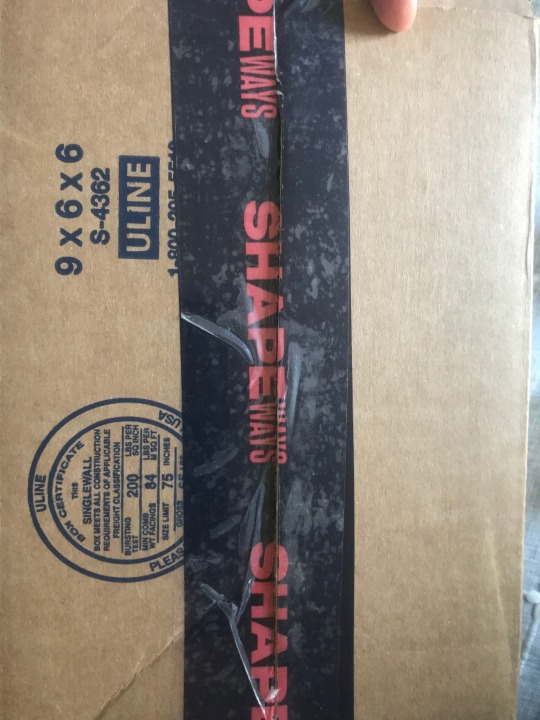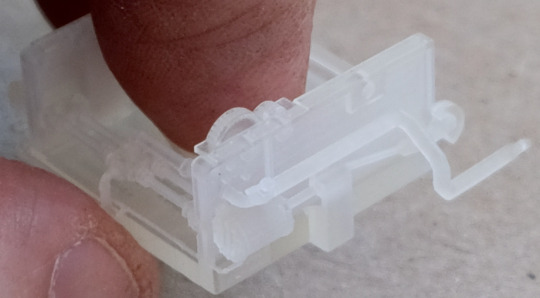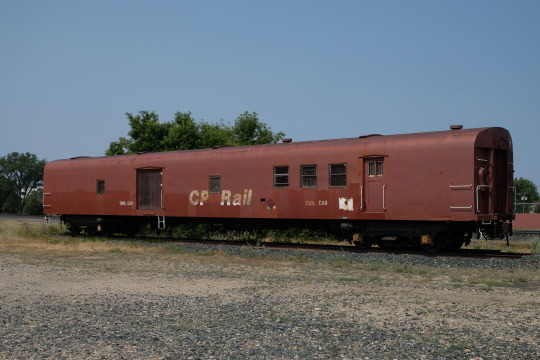thoughts and comments about modelling the Canadian Pacifc Railway line along Burrard Inlet to Vancouver
Don't wanna be here? Send us removal request.
Text
RMMBC May 5th - first night of clinics!

The Online Prologue kicks off on May 5th at 7PM Pacific time with Marty McGuirk's Keynote address titled "Macro Scale Prototype Modelling". Don't miss this opportunity to see and hear this well known model railroader. This is sure to be a fascinating presentation. Register today for both the On Line Prologue and In Person Meets!

Next up after the keynote presentation will be two parallel clinic streams with some great offerings. These clinics and layout tours will offer something of interest for everyone. See the Clinic Schedule page on the RMMBC website for more details.

Tom Price will be presenting "Coquihalla – Ops Was The Easy Part". This clinic will present a unique collection of photographs showing both the construction and maintenance needed on the Canadian Pacific's Coquihalla Subdivision. This was a challenging railway to keep operational, especially in the winter. Many images lend themselves to unique prototypical modelling. If you enjoy mountain railroading, this is a must see.

Greg Amer will be presenting his clinic "Emerging from Prototype Paralyses". Greg will discuss avoiding and getting through some of the common pitfalls and rabbit holes that we all face in the hobby. After a quick start on his layout he got bogged down and finally stalled from prototype paralysis and didn’t know where to restart. After 5 years of avoiding his layout, Greg decided to confront his "demons" and finish the layout. This clinic will cover what he did to get back on track and get going again. This is something that most model railroaders encounter and will be an entertaining presentation on a situation we all can relate to.

For those interested in model railway operations, Brian Stokes' clinic "Getting Real(istic) About Car Forwarding" is a must see clinic. Advances in the hobby have done wonders for prototype modellers as new technology and techniques allow the creation of more realistic models, scenery, sounds, and operations. Car forwarding, however, seems to be lagging behind. Brian will explore innovations to the tried and true methods of car forwarding, and how applying the same attention to detail to our paperwork as we do our freight cars can yield equally rewarding results.

Finally we will have a virtual layout tour of Jarett Dumas' BC Rail/CN themed northern BC layout. This layout has not been on previous RMMBC layout tours so don't miss this opportunity to see a fascinating layout. We'll cover the later online clinics and more in person activities like Displays, "Meet the Modeller", meet ups and layout tours in future newsletters. Register today; We'll see you at the Meet! The RMMBC Committee
0 notes
Photo

Here is a still image captured from the National Film Board movie “Captain Casey Jones: A Railway Goes to Sea”, by Jack Long, which is found by searching for the title: Eye Witness No.54. This and other views of the towing winch frame were the basis for the 3d Model designed for Point Ellice. It is a complicated model to capture the various parts in proportion to each other and the the overall size of the deck cabins, etc. Next, it will be a complicated model to finish! Here’s a second view:

I do not have much colour information for Point Ellice, and for some portions of this winch had to borrow from the similar (smaller) winch frame on SS Master. Here’s an edited photo from the internet of that frame:

0 notes
Photo

Always fun day here - the arrival of another order from Shapeways! This one contains a bunch of parts designed to help move along the PGE tug Point Ellice. Parts include the deck grating that covers the steering mechanism, a bar with rectangular openings in each end (visible in deck photos of Point Ellice), and the steam engine used inside the vessel:

I also spent a lot of time trying to create the towing winch on Point Ellice. This is comprised of three components: the frame, the winch chain and drum, and the spindle guides. OK I just made up those names. No idea what they are actually called. These are small parts and hard to photograph. But here are some cropped views:



Have a look at that chain in the second photo above. There are holes through each link! Its a little-commented on reality. Shapeways can and does print shapes as slim as an HO scale inch in cross section. They will not do it as a commercial product. But if you design it yourself and indicate that you accept the risks of it not printing successfully, they are surprising capable. For my own modelling I often design for this standard - and routinely find myself pleased with the printed parts I receive. The chains here are not to scale, of course. But they are very close.
0 notes
Photo

And the final east bound stop for me - the Winnipeg Railway Museum, currently housed inside the old station near The Forks.
This is a great museum for the steam era railway enthusiast. So much to see there. This is the end of a CPR express reefer. That cast bracket that supports the brake staff is one of those CPR identifiers. If only there was a decent version available in HO scale. Here is the end of another car - giving another perspective on that bracket:

While on site, I learned this museum is about to acquire another heavyweight era passenger car. But due to space constraints, they may have to shed a couple of steam era cars in their collection, including one of the express reefers.
Those are tough decisions they are forced to make. If there was someone with the space indoors to store the equipment, it would be so much better to preserve it.
For each of the stops I made this year, the story is repeated: not enough space, not enough volunteers, and not enough money. Artifacts - including preserved railcars - at risk of being exposed to the elements and deteriorating to the point they cannot be saved.
It seems to me, Canada needs to become more organized about preserving these parts of our history. There is only so much money, but wouldn’t it be good to know the priorities at one small town or one museum have taking into account the needs across the country; that the best pieces are saved.
I also think that we model railroaders are the group most likely to express the interest that helps raise the funds and allow for preservation to continue.
A big topic, and I'm not the one to say what might be done. But we have a lot of people to be grateful to for the work they have put in since the steam era came to an end over 60 years ago!
0 notes
Photo

Down the road from the depots at Portage La Prairie, you come to the Fort la Reine museum.
There, a small crossing shelter, caboose CP 435X38 and an official car are on display,
Is the Rideau, private business car of Van Horne this car - now lettered No.21? It worries me to see it outside the shelter and clearly suffering for the years of wear. I wasn’t able to spend the time to investigate this stop on our trip, so the quick snap shot from the parking lot is it this time.

0 notes
Photo

At Portage, turn around and look across the tracks from the CPR depot - and you are looking at the CNR=Via depot.
What I wouldn’t do to have spent an afternoon train watching here in the steam era!
0 notes
Photo

equipment displayed at Portage. Like to see the smooth side mail-baggage car:

0 notes
Photo

The restored depot at Portage La Prairie - looks good after all these years. Now converted to a museum I think. Here’s the other side:

0 notes
Photo

This is the depot at Roblin, Mn. now used for other purposes. Hard to see through plants track side.

0 notes
Photo

Lanigan, Saskatchewan. Below the train order board support - what are these bits - the pipe and the hatch cover? Would love to know more.
0 notes
Photo

Some details on the track side of the Lanigan, Saskatchewan depot. Too bad the museum staff parked there!
A close up of the supports for the train order board.

0 notes










